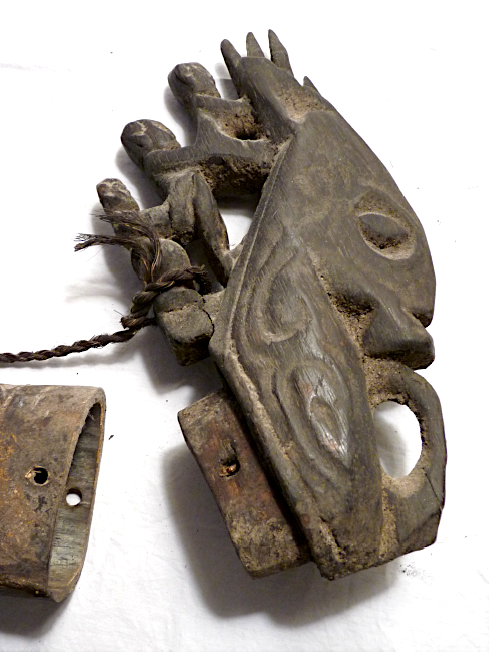Batak Shaman's Horn
Historically, a Batak shaman, or datu, of northern Sumatra would always have at least three crucial objects in order to carry out his ritual or cermeonial enterprises: a staff (tunggal panaluhan), a horn (naga morsarang), and a book of spells (pustaha). Of these, a great datu’s horn would prove the most interesting and impressive sculpturally. This horn is a good example.
This carved softwood horn features the primary Batak mythical beast, the singa, on one end and the primordial ancestor figure on the other tip, in this case with a tufted topknot that makes the figure look almost jaunty. The singa, which is perhaps the central mythological creature in Batak cosmology, is expressed here in its most common form: part human, part water buffalo, and part crocodile or lizard. This singa element served as the stopper-cover for the horn, which was filled with an organic mixture. This example also features three ancestor riders on the singa’s back, a common but not universal feature.
The datu who would use such a horn was a general ritual and supernatural specialist who was expected to communicate with the gods, conduct ceremonies, practice benevolent and malevolent magic, and provide assistance and advice in matters concerning daily life. The medicine horn functioned as a container for a highly potent substance considered magical and even deadly. The substance, called pupuk, could be used to hold the souls of captured enemies, and was prepared, used and handled only by Batak religious specialists.
Acquired at Samosin Island, Lake Toba, February 1983.
Wood, hair, hemp or coir cord; 22 x 42 x 3cm.
Nelson South East Asia Collection © 2025

